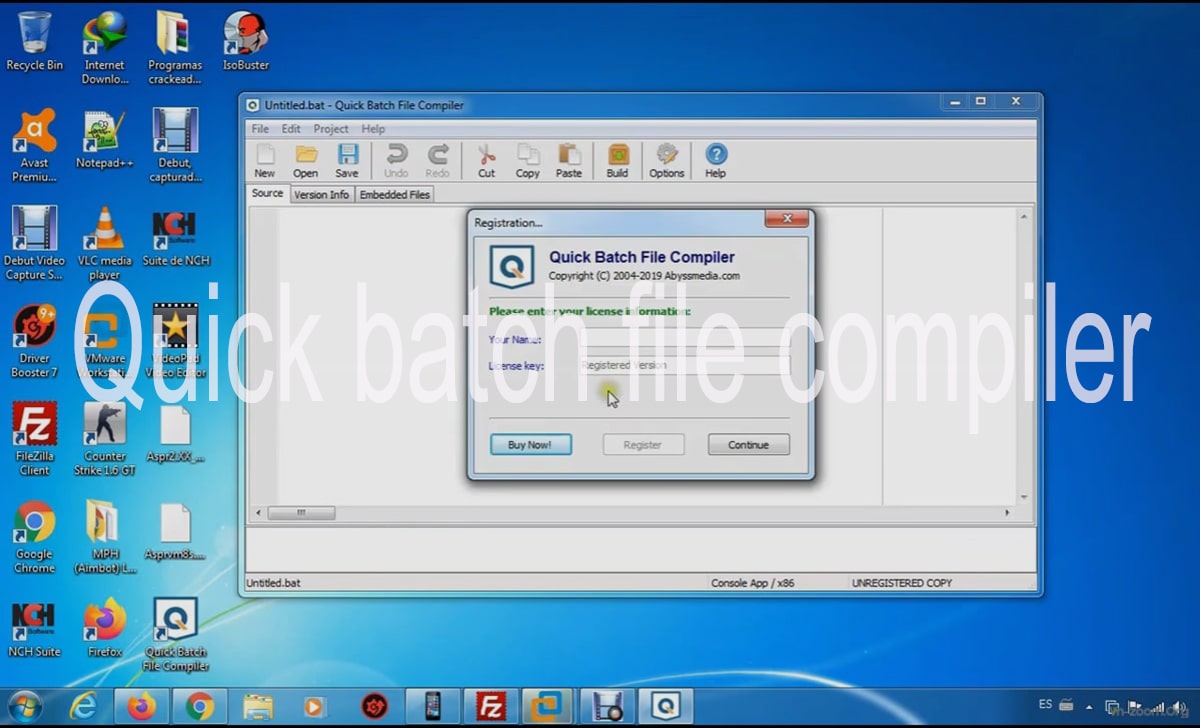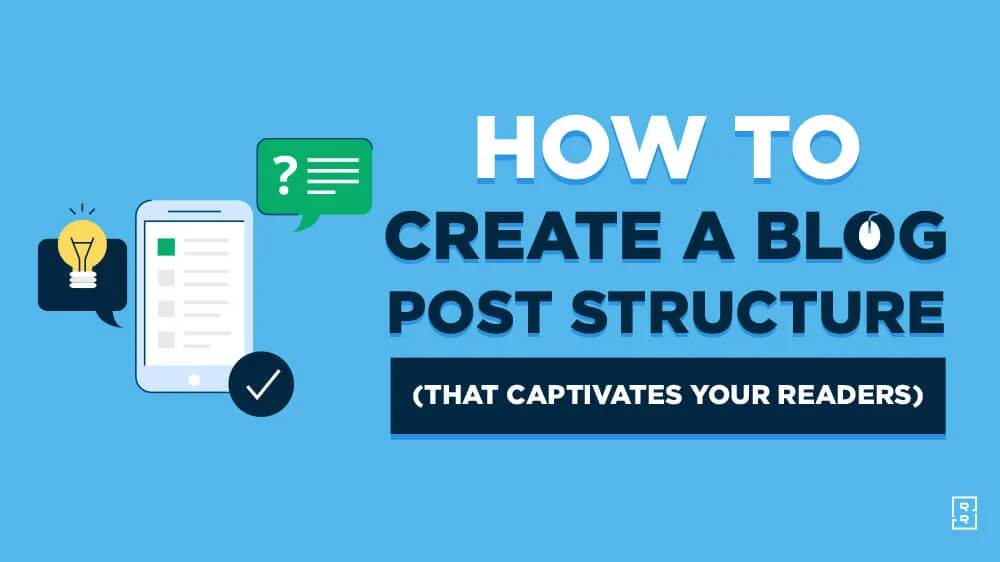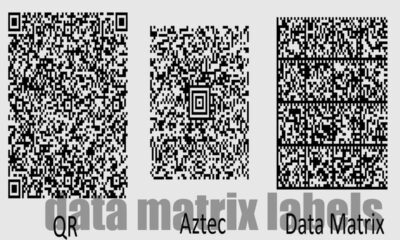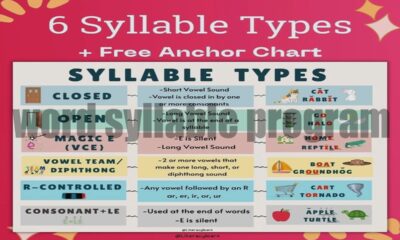SEO
What Is HTML And How Does It Impact On The Web

What is HTML?
HTML is a markup language that is used to create documents on the World Wide Web. Markup languages are used to add structure and organization to data that is presented in an HTML document. HTML5 is the most recent version of HTML. It includes new features such as video and audio, maps, and geolocation.
What is the role of HTML in web design?
HTML is the core language of the World Wide Web and plays an important role in web design. It is used to create the structure and format for web pages, which are then displayed by web browsers. HTML includes tags that define the structure of a document, along with instructions for how to display it on a web page. HTML also includes codes that tell web browsers how to navigate through a document and find specific content.
HTML was created in 1990 by Tim Berners-Lee, who called it “the markup language of the world wide web.” It has been updated over the years to include more features and improve its usability. Today, it is widely considered to be one of the most important aspects of web design.
How to create a basic HTML document
HTML is the markup language of the World Wide Web. It’s a simple, text-based format that allows you to structure your document and add style. HTML is used to create web pages, but it can also be used for other types of documents, like landing pages or even emails.
Creating an HTML document involves five main steps:
1) Create a document outline. This will help you keep your document organized and concise.
2) Define the document’s structure. You need to define the headings, paragraphs, and other elements in your document.
3) Add content. Add text, images, and other elements to your document.
4) Style your content. Add formatting such as fonts and colours to make your content look nicer onscreen.
5) Test and finalize your HTML document. Make sure everything looks correct and that all the elements work together correctly.
How to add content to an HTML document
An HTML document is the foundation of all web pages. It defines the structure of a document, including headings and paragraphs, as well as tags that identify specific content types. HTML also enables you to add multimedia content, such as images and video, to your web pages.
To create an HTML document:
1. Open Microsoft Word or another word processor.
2. Click File > New > Document.
3. In the Name field, type a name for your document (for example, My Web Page).
4. In the Type of Document field, select HTML from the drop-down list.
5. Click OK to create your new document.
6. Double-click the My Web Page icon to open it in your browser window. You’ll see a basic structure for an HTML document displayed in the editor window (see Figure 1). Note: If you’re using Word 2013 or later, you can use Office Online to create and view HTML documents online without having to open Word itself (see Office Online documentation for more information).
How to style an HTML document
If you’re like most people, you probably think of HTML as the language used to create web pages. It’s true that HTML is the foundation of web pages, but it’s not the only thing you need to know to create a successful website.
Just like any other document created in a word processing program or on a computer, an HTML document consists of text and tags. The tags let you control how your text looks and behaves on a web page.
There are many different types of tags, but the most common ones are for formatting text and controlling web page elements like navigation menus and forms.
Here are some tips for using HTML tags:
- Start by creating a basic outline for your document. This will help you structure your content correctly and make sure everything flows together properly.
- Use headings to organize your paragraphs and sections. Heading levels correspond to the level of importance assigned to each section: 1st-level headings are defined at the top of a document, 2nd-level headings appear just below 1st-level headings, etc.
- Use bold text to highlight important information or emphasize points you want to make. You can also use italics or underline to add emphasis to individual words or phrases within a heading or paragraph.
- Use strong (or bold) links (also called “hot links”) to take readers directly from one part of your document to another without having to leave the page. Simply include a link in the text you want to link to, and then provide the destination URL (also called a “link target”) after the link.
- Use code blocks (also called “scripting”) to embed custom scripts or functions into your document. You can use code blocks to create dynamic web pages that will respond to user input or act on behalf of your website as a whole.
- Use images to represent graphical elements or icons on your web page. You can insert images using the tag, or you can use CSS styles to apply specific formatting effects to an image before it’s displayed.
- Use tables to structure your data in a visual way, and to make it easy for readers to search and browse through data sets. You can use table tags to define the layout of your table, as well as the row and column headers, cell sizes, and other properties.
- Use form tags to create interactive web pages that allow visitors to enter information or submit requests. You can also use form tags to manage user submissions and collect data from visitors.
How to optimize an HTML document for web performance
HTML is the markup language for describing the structure of a document on the web. HTML consists of tags that delimit elements on a web page and prescribe how they should be displayed.
HTML5 added new features to HTML, including new tags for multimedia content, forms, and location. The goal of optimizing an HTML document for web performance is to make it as light and as fast as possible while still rendering correctly in all browsers. There are several factors to consider when optimizing an HTML document:
Weight: The fewer tags and attributes present in an HTML document, the faster it will load. Minimize the use of inline images, CSS stylesheets, and JavaScript files.
Size: Keep your documents small by avoiding unnecessary character sequences (like quotation marks) and combining multiple elements into single ones where possible. For example, you can combine two paragraphs into one using the tag.
Placement: Place important elements near the top of your document so that they will load first. Also, place any advertising or navigational elements near the top to reduce delays caused by those components loading first.
Browser Support: Make sure your markup complies with all current browser standards so that it will render correctly in all browsers without any modification.
You can also know to more about SEO Link Building Service
SEO
Bypasslink: Your Complete Guide to Link Shortening and Analytics

Introduction
Link management has become a critical component of digital marketing strategies. Whether you’re running social media campaigns, email marketing, or tracking affiliate links, having the right tools to shorten, customize, and analyze your URLs can make a significant difference in your results.
Bypasslink emerges as a comprehensive solution for businesses and marketers who need more than just basic link shortening. This platform combines URL shortening with powerful analytics, custom branding options, and advanced features that help you understand and optimize your link performance.
This guide will walk you through everything you need to know about Bypasslink, from its core features to advanced optimization techniques that can enhance your digital marketing efforts.
What is Bypasslink?
Bypasslink is a URL shortening and link management platform designed to help businesses, marketers, and content creators optimize their link-sharing strategies. Unlike basic link shorteners, Bypasslink offers a comprehensive suite of tools that go beyond simple URL reduction.
The platform serves as a bridge between your original long URLs and your audience, providing valuable insights into user behavior while maintaining a professional appearance. Bypasslink transforms unwieldy URLs into clean, branded short links that are easier to share and track across multiple channels.
At its core, Bypasslink addresses several common challenges faced by digital marketers: managing multiple links across campaigns, tracking performance metrics, maintaining brand consistency, and optimizing click-through rates. The platform integrates these functions into a single, user-friendly interface.
Features and Benefits
Advanced Analytics Dashboard
Bypasslink provides detailed analytics that go beyond basic click counting. Users can access comprehensive data including geographic location of clicks, device types, referral sources, and time-based performance metrics. This information helps marketers understand their audience better and make data-driven decisions about their campaigns.
The analytics dashboard displays real-time data, allowing you to monitor campaign performance as it happens. You can track individual link performance or view aggregate data across multiple campaigns, making it easier to identify trends and opportunities for optimization.
Custom Branding Options
Brand consistency matters in digital marketing, and Bypasslink recognizes this by offering extensive customization options. Users can create custom domains, choose branded short URLs, and even customize the appearance of landing pages for enhanced brand recognition.
Custom branding helps build trust with your audience while maintaining professional standards across all marketing channels. When users see your branded short links, they’re more likely to click because they recognize and trust your brand.
Bulk Link Management
For businesses managing multiple campaigns simultaneously, Bypasslink offers bulk link creation and management features. You can upload multiple URLs at once, apply consistent naming conventions, and organize links into campaigns or categories for better organization.
This feature significantly reduces the time spent on link management, especially for large-scale campaigns or when working with extensive product catalogs.
Security Features
Bypasslink includes security measures to protect both link creators and end users. The platform monitors for malicious content, provides spam protection, and offers password protection for sensitive links when needed.
These security features help maintain the integrity of your campaigns while protecting your audience from potential threats.
How to Use Bypasslink Effectively
Setting Up Your Account
Begin by creating your Bypasslink account and configuring your basic settings. Choose a custom domain that aligns with your brand, and set up your analytics preferences to ensure you’re tracking the metrics that matter most to your business objectives.
Take time to explore the dashboard and familiarize yourself with the various features available. Understanding the platform’s capabilities from the start will help you make better decisions about how to structure your campaigns.
Creating Your First Campaign
Organize your links into campaigns based on your marketing objectives. This might involve grouping links by product lines, marketing channels, or time periods. Proper campaign organization makes it easier to analyze performance and draw meaningful insights from your data.
When creating links, use descriptive names that help you identify them later. Avoid generic names like “link1” or “campaign_a” in favor of descriptive titles that clearly indicate the link’s purpose and destination.
Link Optimization Strategies
Create compelling short URLs that give users an idea of what to expect when they click. While keeping them brief, try to include relevant keywords or brand elements that enhance recognition and trust.
Consider the context where your links will be shared. Social media links might benefit from different optimization strategies compared to email marketing links or print advertising URLs.
Monitoring and Analysis
Regularly review your link performance data to identify patterns and opportunities for improvement. Look for trends in click-through rates, geographic performance, and device preferences that can inform future campaign strategies.
Use A/B testing to compare different link variations and optimize for better performance. Test different custom endings, descriptions, and even different destination pages to see what resonates best with your audience.
SEO Optimization with Bypasslink
Maintaining Link Equity
While shortened links can sometimes impact SEO value, Bypasslink implements best practices to preserve link equity whenever possible. The platform uses proper redirect methods that help maintain the SEO value of your original URLs.
When using Bypasslink for SEO purposes, ensure that your destination pages are optimized and that the shortened links are used strategically rather than replacing all internal linking structures.
Strategic Link Placement
Use Bypasslink strategically in contexts where shortened links provide clear benefits, such as social media posts, email campaigns, or print materials where space is limited. For website internal linking, consider whether shortened links are necessary or if direct links might be more appropriate.
Tracking SEO Performance
Monitor how your shortened links perform in terms of driving organic traffic and engagement. While these links may not directly impact search rankings, they can influence user behavior metrics that search engines consider when evaluating page quality.
Best Practices
Consistency in Naming Conventions
Develop and maintain consistent naming conventions for your campaigns and links. This makes it easier to organize, find, and analyze your links over time. Include relevant dates, campaign names, or product identifiers in your naming structure.
Regular Performance Reviews
Schedule regular reviews of your link performance data. Weekly or monthly analysis sessions can help you identify trends, successful strategies, and areas needing improvement before small issues become larger problems.
Security Considerations
Always verify destination URLs before creating shortened links, especially when working with user-generated content or affiliate links. Regularly audit your links to ensure they’re still directing to appropriate, safe destinations.
Testing and Optimization
Continuously test different approaches to link creation and sharing. Experiment with different custom endings, sharing times, and platforms to identify what works best for your specific audience and objectives.
Frequently Asked Questions
How does Bypasslink differ from other URL shorteners?
Bypasslink offers more comprehensive analytics, custom branding options, and advanced features like bulk management and enhanced security measures compared to basic URL shorteners. The platform is designed specifically for businesses and marketers who need detailed insights and professional presentation.
Can I track conversions through Bypasslink?
Yes, Bypasslink provides conversion tracking capabilities when properly configured with your analytics tools. You can track not just clicks, but also subsequent actions taken by users who click your links.
Is there a limit to how many links I can create?
Link limits depend on your chosen plan. Bypasslink offers various subscription tiers with different link limits and feature sets to accommodate businesses of all sizes.
How long do shortened links remain active?
Bypasslink links remain active indefinitely under normal circumstances, though specific terms may vary based on your subscription plan. The platform is designed for long-term reliability to support ongoing marketing campaigns.
Can I edit destination URLs after creating a short link?
Yes, Bypasslink allows you to update destination URLs for existing short links, which is particularly useful for campaign management and when destination pages change over time.
Maximizing Your Link Management Strategy
Bypasslink represents more than just a URL shortening service it’s a comprehensive link management solution that can significantly enhance your digital marketing efforts. By providing detailed analytics, custom branding options, and advanced management features, the platform empowers marketers to make data-driven decisions and maintain professional standards across all campaigns.
Success with Bypasslink comes from understanding its capabilities and implementing best practices consistently. Regular monitoring, strategic optimization, and proper organization will help you maximize the value of your link management efforts.
Start by implementing Bypasslink in one area of your marketing strategy, then gradually expand its use as you become more familiar with its features and benefits. The insights you gain will help inform broader marketing strategies and improve overall campaign performance.
SEO
Quick Batch File Compiler: Transform Scripts into Executables

Introduction
Batch files have been a staple of Windows automation for decades, offering a simple way to execute multiple commands sequentially. However, these .bat files come with inherent limitations that can hinder their effectiveness in professional environments. They’re easily readable by anyone with basic text editor access, lack sophisticated error handling, and can appear unprofessional when distributed to end users.
This is where batch file compilers step in to bridge the gap. A quick batch file compiler transforms your plain-text batch scripts into standalone executable files, addressing many of the traditional limitations while maintaining the simplicity that makes batch files so appealing.
Whether you’re a system administrator looking to protect sensitive automation scripts, a developer wanting to create user-friendly tools, or simply someone who needs a more professional way to distribute batch-based solutions, understanding how to leverage quick batch file compiler can significantly enhance your scripting capabilities.
Understanding the Need for a Batch File Compiler
Traditional batch files serve their purpose well for basic automation tasks, but they fall short in several critical areas that modern computing environments demand.
Security and Source Code Protection
The most compelling reason to use a batch quick batch file compiler is source code protection. Standard .bat files are essentially plain text documents that reveal their entire logic to anyone who opens them. This transparency becomes problematic when scripts contain sensitive information such as server paths, configuration details, or proprietary business logic.
Compiled batch files create an additional layer of security by converting readable text into binary executables. While not providing military-grade encryption, this compilation makes casual inspection significantly more difficult.
Professional Distribution
When distributing automation tools to clients or colleagues, executable files present a more professional appearance than script files. Users can run compiled batch programs without needing to understand the underlying commands or worry about accidentally modifying the source code.
Enhanced Functionality
Many batch file compilers include additional features that extend beyond basic command execution. These might include custom icons, version information, digital signing capabilities, and even basic GUI elements that make the resulting programs more user-friendly.
Overview of Available Batch File Compilers
The market offers several batch file compilation solutions, each with distinct strengths and target audiences.
Bat To Exe Converter
This free tool provides a straightforward compilation process with options for invisible execution, administrator privileges, and custom icons. It strikes a good balance between simplicity and functionality, making it popular among casual users and professionals alike.
Advanced BAT to EXE Converter
Despite its name suggesting premium features, this compiler focuses on ease of use while providing essential compilation options. It includes encryption capabilities and supports including additional files within the compiled executable.
quick batch file compiler File Compiler
True to its name, this tool emphasizes speed and simplicity in the compilation process. It offers a clean interface with minimal configuration options, making it ideal for users who need fast results without complex setup procedures.
IExpress (Built into Windows)
Microsoft includes IExpress as part of Windows, providing a native solution for creating self-extracting packages and simple executable wrappers. While not specifically designed for batch files, it can effectively compile them with additional deployment capabilities.
How Batch File Compilers Work
Understanding the compilation process helps in choosing the right tool and optimizing your batch files for compilation.
Conversion Process
Batch quick batch file compiler don’t translate your batch commands into native machine code like traditional programming language compilers. Instead, they create wrapper executables that contain your original batch script embedded within them. When the compiled program runs, it extracts and executes the batch commands using the Windows command interpreter.
Resource Embedding
During compilation, your batch script becomes a resource within the executable file. Advanced compilers may also embed additional files, images, or data that your script requires, creating a self-contained program that doesn’t depend on external files.
Runtime Environment
The compiled executable includes a small runtime component that manages the extraction and execution of your embedded batch script. This runtime handles tasks such as temporary file creation, command interpreter invocation, and cleanup operations.
Step-by-Step Guide to Compiling a Batch File
Creating your first compiled batch file involves several straightforward steps that can be completed in minutes.
Preparing Your Batch Script
Before compilation, ensure your batch file works correctly as a standard .bat file. Test all commands, verify file paths, and confirm that any external dependencies are clearly identified. Consider how the script will behave when run from different locations, as compiled executables may have different working directories than expected.
Choosing Compilation Settings
Most compilers offer various options that affect how your executable behaves. Common settings include:
- Visibility options (visible command window, hidden execution, or minimized window)
- Administrative privilege requirements
- Custom icons and version information
- Encryption or obfuscation levels
- Include additional files or dependencies
The Compilation Process
Launch your chosen compiler and select your prepared batch file. Configure the desired settings based on your specific requirements. Choose an output location and filename for your executable. Most compilers complete the process within seconds, producing a standalone .exe file ready for distribution.
Testing the Compiled Executable
Always test your compiled executable thoroughly before distribution. Run it on different systems if possible, verify that all functions work as expected, and ensure that any file dependencies are properly handled.
Best Practices for Writing Compilable Batch Files
Certain coding practices make your batch files more suitable for compilation and improve the reliability of the resulting executables.
Path Handling
Use relative paths whenever possible, or implement dynamic path resolution using variables like %~dp0 to reference the script’s directory. This ensures your compiled executable works regardless of where users place it on their systems.
Error Handling
Implement robust error checking using conditional statements and error codes. Since compiled executables may run without visible command windows, users won’t see error messages unless you explicitly handle and display them.
Resource Management
Be mindful of temporary files and cleanup operations. Compiled batch files should clean up after themselves, removing any temporary files created during execution to avoid cluttering user systems.
Advantages of Using a Batch quick batch file compiler
Compilation offers several significant benefits that extend the usefulness of batch scripts beyond their traditional limitations.
Improved Security
While not providing complete protection, compilation makes casual inspection of your script logic much more difficult. This helps protect intellectual property and prevents unauthorized modifications to your automation processes.
Better User Experience
Compiled executables can include custom icons, version information, and digital signatures that make them appear more professional and trustworthy to end users. They integrate better with Windows systems and can be easily distributed without requiring users to understand batch file execution.
Simplified Distribution
A single executable file is much easier to distribute than multiple batch files with their associated dependencies. Users can run compiled programs without needing to maintain specific directory structures or worry about missing components.
Disadvantages and Potential Issues
Despite their advantages, compiled batch files introduce some challenges that developers should consider.
Limited Real Compilation
Unlike true compiled languages, quick batch file compiler create wrappers rather than optimized machine code. This means the underlying performance limitations of batch processing remain unchanged.
Antivirus Sensitivity
Some antivirus programs flag compiled batch files as potentially suspicious, especially those compiled with encryption or obfuscation features. This can create distribution challenges in security-conscious environments.
Debugging Complexity
Troubleshooting issues in compiled batch files becomes more difficult since you can’t easily examine the runtime behavior or modify the script for testing purposes.
Case Studies and Examples
Real-world applications demonstrate the practical value of batch file compilation across various scenarios.
System Administration
A network administrator created a compiled batch program for password resets that includes encrypted server credentials. The compilation prevents casual users from accessing sensitive connection information while providing a simple interface for help desk staff.
Software Deployment
A software company uses compiled batch files to handle post-installation configuration tasks. The compilation ensures their proprietary setup procedures remain protected while providing customers with reliable installation tools.
Data Processing
A financial services firm compiles their data validation scripts to protect proprietary business rules while allowing non-technical staff to run standardized report generation processes.
Frequently Asked Questions
Can compiled batch files run on systems without Windows?
No, compiled batch files remain dependent on Windows and the command interpreter. They cannot run on Linux or macOS systems without compatibility layers like Wine.
How secure are compiled batch files really?
Compilation provides obfuscation rather than true security. Determined individuals with the right tools can still extract and examine the original batch code. Consider compilation as protection against casual inspection rather than serious reverse engineering attempts.
Do compiled batch files run faster than regular quick batch file compiler?
No, compilation doesn’t improve execution speed. The underlying batch commands still run through the same Windows command interpreter with identical performance characteristics.
Can I include files other than the batch script in my compiled executable?
Many compilers support embedding additional quick batch file compiler, images, or data within the executable. These resources can be extracted at runtime for use by your batch script.
Will antivirus software block my compiled batch files?
Some antivirus programs may flag compiled executables, particularly those using encryption features. Testing with common antivirus solutions and obtaining digital signatures can help reduce false positives.
Making the Right Choice for Your Needs
Batch file compilation offers a practical solution for many common scripting challenges, from source code protection to professional distribution requirements. The process itself is straightforward, with several quality tools available to suit different needs and budgets.
The key to success lies in understanding both the capabilities and limitations of compilation. While it won’t transform your batch scripts into high-performance applications, it can significantly improve their security, usability, and professional appearance.
Consider starting with a simple project to familiarize yourself with the compilation process. Test different compilers to find the one that best matches your workflow and requirements. With the right approach, compiled batch files can become valuable tools in your automation toolkit, bridging the gap between simple scripts and professional software solutions.
SEO
Colu Tex: The Complete Guide to This Emerging Technology

Introduction
Have you heard whispers about Colu Tex but aren’t quite sure what it is or how it could benefit your projects? You’re not alone. This innovative technology has been gaining traction across various industries, yet many professionals remain unclear about its practical applications and advantages.
Colu Tex represents a significant advancement in digital solutions, offering unique capabilities that can streamline workflows and enhance productivity. Whether you’re a business owner looking to optimize operations or a developer seeking cutting-edge tools, understanding Colu Tex could give you a competitive edge.
This comprehensive guide will walk you through everything you need to know about Colu Tex from its core features to real-world applications. By the end, you’ll have a clear understanding of how this technology works and whether it’s the right fit for your needs.
What is Colu Tex?
Colu Tex is an innovative technological framework designed to address complex digital challenges through its unique approach to data processing and system integration. This versatile platform combines advanced algorithms with user-friendly interfaces, making sophisticated operations accessible to both technical and non-technical users.
The technology emerged from the need for more efficient digital solutions that could adapt to rapidly changing business requirements. Unlike traditional systems that often require extensive customization, Colu Tex offers flexible configurations that can be tailored to specific use cases without compromising performance.
At its core, Colu Tex functions as a bridge between different digital environments, enabling seamless communication and data exchange across various platforms and applications.
Key Features and Benefits
Advanced Integration Capabilities
Colu Tex excels at connecting disparate systems and applications. Its robust API architecture allows for smooth integration with existing software infrastructure, eliminating the need for costly system overhauls. This compatibility extends across multiple programming languages and database systems.
Scalable Performance
One of Colu Tex’s standout features is its ability to scale dynamically based on demand. Whether you’re processing small datasets or handling enterprise-level operations, the system adjusts its resources automatically to maintain optimal performance levels.
Enhanced Security Framework
Security remains a top priority in Colu Tex’s design. The platform incorporates multiple layers of protection, including encrypted data transmission, secure authentication protocols, and regular security updates. This comprehensive approach helps protect sensitive information while maintaining system accessibility.
User-Friendly Interface
Despite its sophisticated backend capabilities, Colu Tex presents users with an intuitive interface that requires minimal training. The dashboard provides clear visualizations of system performance and easy access to key functions, making it accessible to users with varying technical backgrounds.
Cost-Effective Implementation
Organizations can implement Colu Tex without significant upfront investments in new hardware or extensive staff training. The platform’s efficient resource utilization often leads to reduced operational costs over time.
Common Use Cases and Problem-Solving Applications
Data Management and Analytics
Many organizations struggle with fragmented data across multiple systems. Colu Tex addresses this challenge by creating unified data pipelines that aggregate information from various sources, enabling comprehensive analytics and reporting capabilities.
Workflow Automation
Repetitive manual processes drain resources and introduce potential for human error. Colu Tex automates routine tasks, freeing up staff to focus on higher-value activities while improving accuracy and consistency.
System Modernization
Legacy systems often create bottlenecks in modern business operations. Colu Tex provides a pathway for gradual system modernization, allowing organizations to upgrade their capabilities without disrupting existing operations.
Cross-Platform Communication
Organizations using multiple software solutions often face communication barriers between systems. Colu Tex serves as a universal translator, enabling different platforms to share information effectively.
How to Implement Colu Tex: A Step-by-Step Guide
Step 1: Assessment and Planning
Begin by evaluating your current systems and identifying specific pain points that Colu Tex could address. Document your requirements, including performance expectations, integration needs, and budget constraints. This assessment will guide your implementation strategy.
Step 2: Environment Preparation
Prepare your technical environment by ensuring adequate server resources and network connectivity. Review security requirements and establish necessary access controls. Consider any compliance requirements that may affect implementation.
Step 3: Initial Configuration
Start with basic configuration settings that align with your primary use case. Colu Tex’s setup wizard guides you through essential parameters, including data source connections, user permissions, and basic workflow rules.
Step 4: Integration Setup
Connect Colu Tex to your existing systems using the provided integration tools. Start with one or two critical systems before expanding to additional platforms. Test each connection thoroughly before proceeding to the next integration.
Step 5: Testing and Validation
Conduct comprehensive testing using real data in a controlled environment. Verify that all integrations function correctly and that data flows as expected. Address any issues before moving to production deployment.
Step 6: Production Deployment
Roll out Colu Tex in phases, starting with less critical processes before expanding to mission-critical operations. Monitor performance closely during initial deployment and be prepared to make adjustments as needed.
Step 7: Training and Adoption
Provide training sessions for end users, focusing on features most relevant to their roles. Create documentation and reference materials to support ongoing adoption and troubleshooting.
Enhancing SEO with Colu Tex
Content Optimization
Colu Tex includes built-in tools for analyzing and optimizing content for search engines. The platform can automatically suggest improvements for meta descriptions, title tags, and content structure based on current SEO best practices.
Performance Monitoring
Site speed and performance directly impact search rankings. Colu Tex provides real-time monitoring of website performance metrics, alerting administrators to potential issues before they affect user experience or search visibility.
Data-Driven Insights
The platform aggregates SEO performance data from multiple sources, providing comprehensive insights into search rankings, traffic patterns, and conversion metrics. These insights enable data-driven optimization decisions.
Technical SEO Management
Colu Tex automates many technical SEO tasks, including sitemap generation, schema markup implementation, and broken link detection. This automation ensures consistent technical optimization without requiring constant manual oversight.
Real-World Examples and Success Stories
E-commerce Integration
A mid-sized online retailer used Colu Tex to integrate their inventory management system with their e-commerce platform and accounting software. The integration reduced manual data entry by 80% and eliminated inventory discrepancies that previously cost the company thousands of dollars monthly in overselling incidents.
Healthcare Data Management
A regional healthcare network implemented Colu Tex to connect patient records across multiple facilities. The solution improved patient care coordination and reduced administrative overhead by automating data sharing between departments while maintaining strict HIPAA compliance.
Manufacturing Process Optimization
A manufacturing company leveraged Colu Tex to connect their production monitoring systems with quality control databases. This integration enabled real-time quality tracking and predictive maintenance scheduling, resulting in 15% improvement in overall equipment effectiveness.
Frequently Asked Questions
What technical expertise is required to use Colu Tex?
While basic technical understanding is helpful, Colu Tex is designed for users with varying skill levels. Most configuration tasks can be completed through the web interface without programming knowledge. However, complex integrations may benefit from technical expertise.
How long does implementation typically take?
Implementation timeframes vary based on complexity and scope. Simple integrations can be completed in days, while comprehensive enterprise deployments may take several weeks. The modular approach allows for phased implementation to minimize disruption.
What ongoing maintenance is required?
These requires minimal ongoing maintenance due to its automated update system and self-monitoring capabilities. Regular review of performance metrics and periodic configuration updates represent the primary maintenance activities.
Can Colu Tex integrate with cloud-based systems?
Yes, Colu Tex supports integration with major cloud platforms including AWS, Azure, and Google Cloud. The platform’s flexible architecture accommodates both cloud-based and on-premises systems.
What support options are available?
Support options include comprehensive documentation, video tutorials, community forums, and direct technical support. Premium support packages offer priority assistance and dedicated account management.
Getting Started with Your Colu Tex Journey
These represents a powerful solution for organizations seeking to modernize their digital infrastructure and streamline operations. Its combination of advanced capabilities and user-friendly design makes it accessible to businesses of all sizes.
The key to successful Colu Tex implementation lies in careful planning and phased deployment. Start by identifying your most pressing integration challenges and use those as initial proof-of-concept projects. Success with smaller implementations builds confidence and expertise for larger initiatives.
Consider reaching out to Colu Tex’s community forums or support team to discuss your specific use case. Their expertise can help ensure your implementation follows best practices and achieves optimal results from the start.
-

 Travel3 years ago
Travel3 years agoNEW ZEALAND VISA FOR ISRAELI AND NORWEGIAN CITIZENS
-

 Technology3 years ago
Technology3 years agoIs Camegle Legit Or A Scam?
-

 Uncategorized3 years ago
Uncategorized3 years agoAMERICAN VISA FOR NORWEGIAN AND JAPANESE CITIZENS
-

 Health3 years ago
Health3 years agoHealth Benefits Of Watermelon
-

 Home Improvement5 months ago
Home Improvement5 months agoArtificial Grass Designs: Perfect Solutions for Urban Backyards
-

 Fashion2 years ago
Fashion2 years agoBest Essentials Hoodies For Cold Weather
-

 Uncategorized3 years ago
Uncategorized3 years agoHow can I write a well-structured blog post?
-

 Technology1 year ago
Technology1 year agoImagine a World Transformed by Technology and Innovation of 2023-1954














